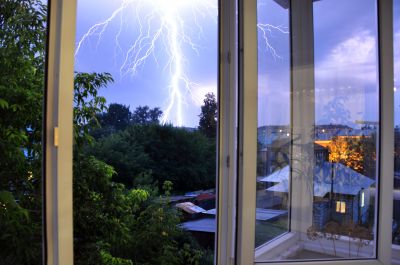Leading Tools For Storm Restorations To Ensure Complete Property Recovery
Equip yourself with trusted tools and materials designed for comprehensive storm damage restoration projects.
 Storm restorations in Palm Desert, CA, require a comprehensive approach to ensure structures are resilient against weather-related damages. A variety of products are essential for effective restoration efforts, ranging from protective barriers to repair materials. Proper selection of these products can help mitigate further damage and facilitate faster recovery after storms. It is important to consider the specific needs of each property, including its location, structure type, and vulnerability to different storm conditions.
Storm restorations in Palm Desert, CA, require a comprehensive approach to ensure structures are resilient against weather-related damages. A variety of products are essential for effective restoration efforts, ranging from protective barriers to repair materials. Proper selection of these products can help mitigate further damage and facilitate faster recovery after storms. It is important to consider the specific needs of each property, including its location, structure type, and vulnerability to different storm conditions.
Top Overall Option
Heavy-Duty Waterproof Tarp
A versatile waterproof tarp offers reliable protection against moisture intrusion and can serve as an effective temporary cover during storm restoration. Its durability and large coverage area make it suitable for various applications, from covering damaged roofs to protecting furniture and interior spaces. Designed to withstand harsh weather conditions, this tarp is an essential component in storm recovery kits, providing peace of mind during unpredictable weather events.
Types of Products For Storm Restorations
Impact-Resistant Windows
Designed to withstand high winds and debris impact, these windows help protect interiors during storms.
Heavy-Duty Roofing Materials
Durable roofing options that resist water infiltration and wind damage, essential for roof repairs.
Weatherproof Sealants
Sealants that provide a waterproof barrier on cracks and joints to prevent leaks.
Reinforced Doors
Sturdy doors with impact resistance to enhance structural security during storms.
Storm-Resistant Shutters
Protect windows and glass doors from debris and wind pressure.
Heavy-Duty Tarps
Large, durable tarps for temporary coverage of damaged areas.
Power Washers
Equipment for cleaning debris, mold, and dirt from surfaces after storms.
Debris Removal Tools
Tools such as rakes, shovels, and wheelbarrows for clearing storm debris.
Structural Reinforcements
Steel braces and supports to strengthen weakened structures.
Roofing Underlayment
Protective layers installed beneath roofing materials to improve water resistance.
Gutter Guards
Devices to prevent clogging and ensure proper drainage during heavy rains.
Safety Equipment
Gloves, goggles, respirators, and other gear to protect workers during restoration.
Flood Barriers
Portable barriers to divert water away from properties during flooding.
Siding Repair Kits
Materials for fixing or replacing damaged exterior sidings.
Interior Water Sealants
Products to prevent water intrusion into walls and floors.
Roof Ventilation Fans
Assist in drying and ventilating attics and damaged areas.
Popular Choices
Widely used for their ability to withstand storm debris impact.
Commonly employed as a quick protective cover during restoration.
Popular for safeguarding windows against high winds and debris.
Often selected for roof repairs to add an extra layer of water resistance.
Frequently installed to prevent clogging and manage heavy rainfall.
Essential for clearing storm debris efficiently.
Used to strengthen vulnerable building elements.
Necessary for worker safety during storm cleanup and repairs.
Popular for property protection against flooding.
Commonly applied to prevent interior water damage.
Chosen to improve drying and ventilation after storm damage.
Used to enhance exterior security during storms.
Frequently used for sealing cracks and joints.
Popular for quick exterior repairs.
Applied to exterior surfaces to improve water resistance.
Commonly selected for roof restoration projects.
During storm restoration, durable roofing materials are often prioritized to prevent leaks and structural damage. Waterproof sealants and weatherproof paints can protect surfaces from moisture intrusion, while heavy-duty tarps serve as temporary covers during ongoing restoration work. For damaged exteriors, impact-resistant windows and reinforced doors can provide added security. In addition, specialized tools such as power washers and debris removal equipment are vital for cleaning and clearing affected areas.
The selection of appropriate products also depends on the extent of the damage. For minor repairs, patching compounds and sealants may suffice, whereas extensive restoration might require structural reinforcements and replacement materials. Safety equipment, including gloves, goggles, and respirators, should not be overlooked to ensure the safety of workers and homeowners during the restoration process. Overall, a well-rounded set of products tailored to the specific storm damage can significantly streamline the recovery process and restore property integrity efficiently.
Key Buying Considerations
- Assess the specific storm risks in Palm Desert, CA, to choose appropriate protection products.
- Ensure products are rated for impact resistance and weather durability.
- Consider the size and coverage area needed for temporary coverings like tarps.
- Evaluate the ease of installation and removal of storm protection products.
- Check for compatibility with existing structures and materials.
- Prioritize safety features in products such as impact-resistant glass and reinforced doors.
- Determine the level of water resistance required based on flood risks.
- Look for products with high durability to withstand prolonged exposure to harsh weather.
- Consider multi-purpose products that can serve various restoration needs.
- Review product warranties and manufacturer specifications for reliability.
- Factor in the ease of maintenance and cleaning after storm events.
- Balance cost with quality to ensure effective protection without overspending.
- Verify that products meet local building codes and regulations.
- Think about the long-term benefits of investing in high-quality storm protection solutions.
- Plan for storage and transportation of temporary protection materials when not in use.
